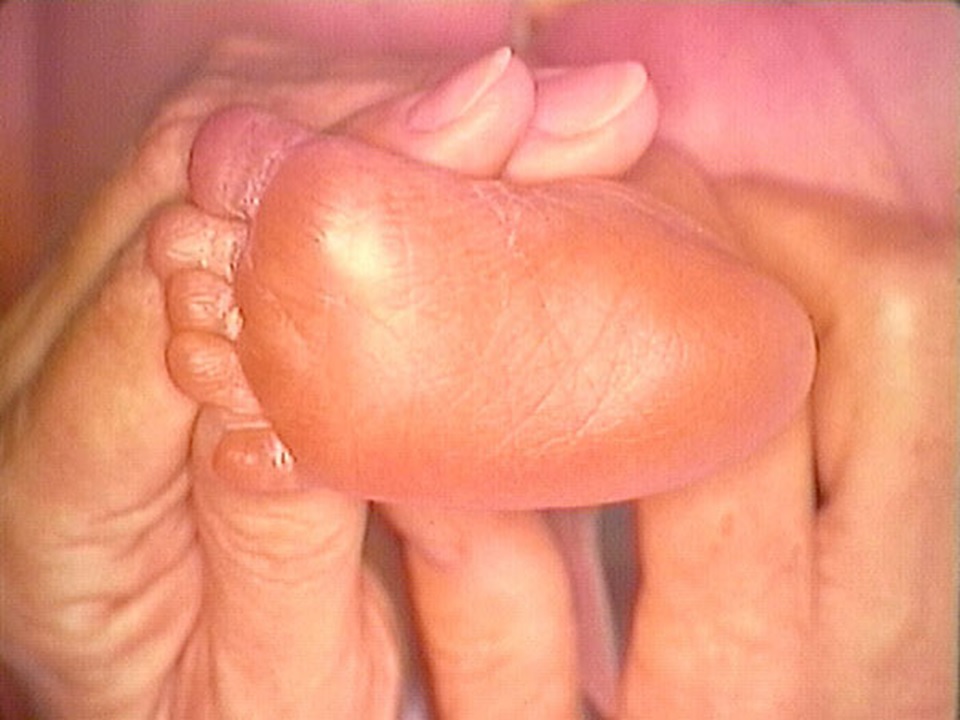Plantar Surface Assessment using the Ballard Score
This item pertains to the major foot creases on the sole of the foot. The first appearance of a crease appears on the anterior sole at the ball of the foot. this may be related to foot flexion in utero, but is contributed to by dehydration of the skin. Infants of non-white origin have been reported to have fewer foot creases at birth. (ref 9) There is no known explanation for this.
On the other hand, the reported acceleration of neuromuscular maturity in African American infants usually compensates for this, resulting in a cancellation of the delayed foot crease effect. Hence, there is usually no over- or under-estimation of gestational age due to race when the total score is performed. (ref 10)

Plantar Surface Factors and Measurement
Very premature and extremely immature infants have no detectable foot creases. To further help define the gestational age of these infants, measuring the foot length or heel-toe distance is helpful. (ref 10,12) This is done by placing the infant's foot on a metric tape measure and noting the distance from the back of the heel to the tip of the great toe. For heel-toe distances less than 40 mm, a minus two score (-2) is assigned; for those between 40 and 50 mm, a minus one score (-1) is assigned.

Plantar Surface Score
| SIGN | PHYSICAL MATURITY SCORE | SIGN SCORE | ||||||
| -1 | 0 | 1 | 2 | 3 | 4 | 5 | ||
| Plantar Surface |
heel-toe
40-50mm: -1 <40mm: -2 |
>50 mm no crease |
faint red marks |
anterior
transverse crease only |
creases ant. 2/3 |
creases
over entire sole |
||

Page 1 of 1